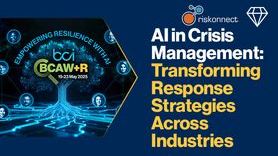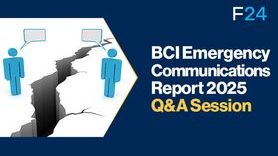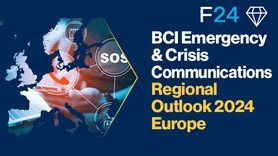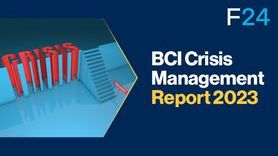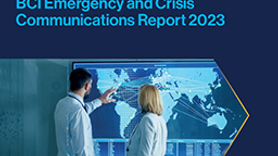Resilience professionals are transforming their crisis management practices as they are challenged by an increasingly complex risk environment
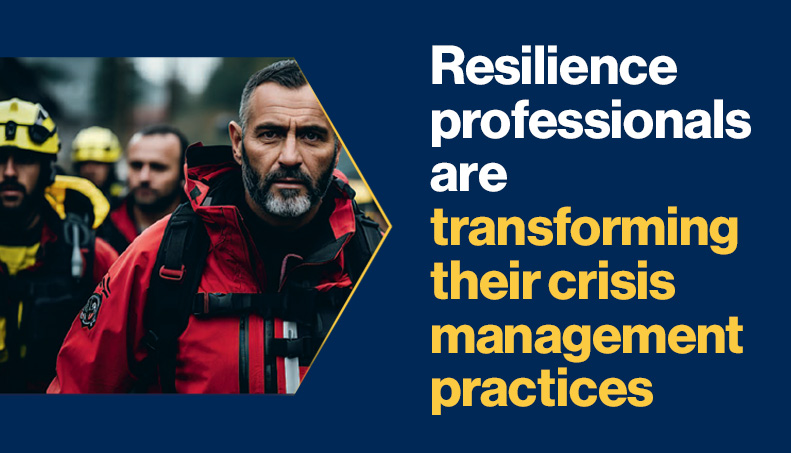
The BCI Crisis Management Report 2024 launches today and explores the global status of crisis management over the past year. Sponsored by F24, the report uses survey responses and structured interviews with resilience professionals to provide in-depth insights into the current state of play in the crisis management arena, as well as forward thinking analysis of how the landscape will look in 2025.
Frequent plan activations
This year’s research shows that the majority of organizations (75.1%) have activated their crisis management plans over the past 12 months. This is the first time the report has gathered information about activation frequency, and this high percentage clearly highlights the ongoing need for well-trained crisis management professionals across all sectors, the requirement of continual review and improvement of existing practices, and the necessity of experienced and well exercised crisis management teams that can rapidly and effectively respond to incidents.
Extreme weather events top the list for crisis activation plans in 2024
Over the past twelve months, a wide variety of threats have triggered crisis management responses. Extreme weather events top the list, with third-party failures and cyber-attacks taking joint second place. Other less frequent activation events include civil unrest, conflict, vandalism, or activism, and health and safety incidents.
This broad range of incidents indicates the need for a crisis management team with a diverse range of perspectives and plans that are adaptable and flexible enough to address the effects of events, whatever the cause.
Reflective practices boost plan effectiveness, but lack senior management participation
46.4% of organizations (the highest noted in this study) report conducting post-incident/after-action reviews, highlighting an elevated perception of the importance of reflective practice, and ensuring ‘lessons-learned’ are incorporated into a continuing improvement strategy for crisis management practices. However, senior leadership was only well-represented in three quarters of organizations, a worrying trend that indicates top management do not allocate enough priority to reflective practices.
Top priorities remain the same, however challenges persist
As with last year’s report, quick mobilisation of the crisis management team, effective external communications, and staff wellbeing are this year’s top priorities. However, concerns over inadequate training, such as a lack of awareness of crisis plans and failure to share plans within the organization, indicates that siloes persist, and implementing management-level training shows most organizations still have work to do to have a best-in-class crisis management team.
Encouragingly, staff wellbeing is a rising priority with 87.0% of organizations considering it a key requirement of the crisis management team, but despite this, a quarter of organizations state that they do not change crisis team members enough, and 16.5% harbour concerns over the crisis management team’s risk of burnout.
A combination approach is growing within organizations, but the importance of regional autonomy is recognised
This year, more organizations than ever have expressed a preference for a crisis management structure that has some degree of centralisation (84.7%), highlighting a move towards more streamlined problem solving, as well as helping to break down the problematic siloes. However more organizations than ever before are using a hybrid approach to bring together centralised strategies with local teams given the autonomy to action parts of the crisis management plan themselves.
Another change from last year is the increasing number of senior executives recognising the importance of delegated control. 52.9% now assume an oversight role, highlighting a growing recognition that managers may need to make rapid decisions without waiting for senior approval.
A rise in the number of virtual crisis rooms and the increasing use of AI
Many organizations are moving away from physical crisis rooms in favour of virtual rooms that simplify efficiency, enable rapid response times, and allow global participation. Mirroring the rise of virtual crisis management tools is the increasing use of enterprise software, messaging apps, and virtual crisis room/dashboard technology. AI use is also rising, most notably for data analysis and support, real-time monitoring and alerts, and automated response protocols in a crisis management response.
Rachael Elliott, BCI Knowledge Strategist:
”Given the sheer volume and variety of events over the past year, the fact that more than three-quarters of organizations have had to activate their crisis management team over the past year comes as little surprise. However, far more noteworthy is the changes organizations are making to their crisis management strategies in order to meet these new challenges. An increased preference for centrally co-ordinated crisis teams, the stepping-up of reflective practices to learn from mistakes made during crises, and the increased investment in tools and technologies means organizations are becoming better-placed to deal with the expected – and unexpected – incidents that could hit their organization in 2025.”
Benjamin Jansen, Senior Vice President Sales ENS/CM, F24:
“As the report highlights once again, the complexity and frequency of crises in today's world make resilience for companies more important than ever. Disruptions ranging from natural disasters to cyber threats are triggering crisis responses with greater regularity. These events, sometimes even occurring simultaneously, require rapid and effective management. This is where technology can help and enable crisis teams to act faster, be more targeted and manage critical situations successfully.”












